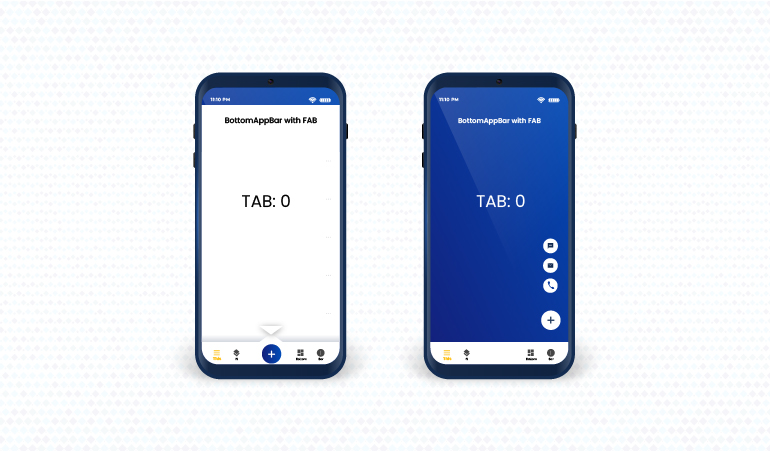Top Best Advantages of Flutter for Cross-Platform Development

Flutter continues in the mobile application development world, as 42% of the developers have chosen this cross-platform framework. Flutter also ranked 6th among the most popular technologies in the 2022 Stack Overflow Developer Survey.
To find out why, let’s dive into the advantages of Flutter app development, which make it a first choice among developers.
Advantages of Flutter for Cross-Platform App Framework
Several advantages of Flutter are going to be discussed below:
1. A Cross-platform Development Framework
So, where is Flutter used for? Using this SDK, you can develop applications that can function smoothly on the desktop, mobile, and web platforms without involving separate developers.
When you write the code once in Flutter, you will be confident that the application will function identically on all the different platforms, thus saving app development costs.
Furthermore, the introduction of new features to your application is done quickly in Flutter as you just need to update the code once.
This approach saves precious time and resources so that you can concentrate on improving the functionality and usability of the app rather than being anxious about the platform-specific coding.
2. Same UI and Business Logic in All Platforms
Most cross-platform frameworks allow for code sharing between target platforms. However, Flutter is different because it allows the sharing of UI code and UI itself.
That’s a big plus of Flutter compared to other frameworks. For example, let’s consider how UI rendering is usually implemented in most cross-platform frameworks:
It seems very easy for a cross-platform framework to generate an app that looks native on every platform, but complexities are involved.
Most frameworks rely on platform-specific components for rendering, requiring a property mapping layer for the platform and a framework widget data synchronization, which complicates the process of developing, especially when it is time to map the animations into a platform-specific widget call.
3. Fast Development Due to “Hot Reload” Feature
The hot reload feature is an awesome tool that significantly accelerates app development. It was designed by a team of engineers at Google to increase developer productivity and ensure quick change-making.
The convenience of hot reload makes it very easy to experiment, build the UI, add features, and even fix bugs.
Updated Source code files are injected into the Dart Virtual Machine, which in turn rebuilds the widget tree automatically after updating classes with new fields and versions of functions.
Hot reload will allow developers to see changes in their code in real time with a sub-second delay from saving the code until it appears on the same screen.

4. Highly Customizable UI Design
Even for complex UI designs, Flutter makes the customization process easy, which is sometimes not possible with native platforms.
For example, a shared element transition, shapes, colors, and shadow manipulation, clipping, and transformation can be done easily with Flutter. This makes the work more versatile without adding weight to the workload. Here is an illustration of how it works:

Flutter developers use wide variety of graphics and animation libraries to create high-fidelity user interfaces that are slick, visually stunning, and immediately responsive to touch.
Apps are also adaptable to any size or aspect ratio and beautiful on phones and tablets. Flutter also supports 3D graphics, allowing for the use of standard 3D tools like Blender to create models and 3D meshes.
These can be imported into Flutter, programmed, and used much like other code components.
5. A Wide Variety of Rich Widgets
In Flutter apps, widgets are the building blocks for constructing them. They are then used to make the app, like a button, text, and input fields. Flutter’s widgets follow Material Design guidelines from Android and Cupertino style from Apple.
One can easily customize the interface that user want by using these widgets, which is usually the most time-consuming part of cross-platform development.
6. Access to Native Features
Many businesses cannot develop native applications and hence use mobile web pages or PWAs as alternatives, which, in turn, may often fail to meet expectations. That’s where Flutter fits in.
Flutter can achieve native app performance without additional charge, utilizing only one framework, free of charge, and easy. Most other cross-platform frameworks do not work using intermediate code representations or interpretations.
Instead, Flutter apps build directly to machine code, thus getting rid of any performance bugs associated with interpretation processes.
7. Publicly Accessible
Flutter is open source and, therefore, opens a window to the original development process; you get direct access to the codebase for your project.
The community is thriving and willing to support you in building your app. You can give back by sharing your knowledge and bug reporting.
This approach creates a perpetual improvement and innovation culture, making Flutter a dynamic and exhilarating digital workplace platform.
Moreover, Flutter receives strong support and ongoing development from Google as the company has come to rely on the framework. Google has a strong team of developers that ensures any bugs or issues with Flutter are sorted out immediately.
Furthermore, Google is developing the UI and applications for its multi-platform operating system, Google Fuchsia. This kind of investment means that Flutter users can trust that the framework will be valid and supported in the future.
Can Flutter be a Beneficial Solution for Businesses?
Flutter, from a business point of view, can be an efficient solution for the development of applications. Here are some of the reasons why:
Another interesting feature from Flutter is hot-reload, which allows a developer to see changes in real time, so iterative tweaking is simpler, and the app changes quickly. This might imply faster development and quicker time to market for your application.
-
Compatibility Across Platforms:
With Flutter, you can write code for all available platforms. The development of separate apps for different platforms is time-consuming and more expensive.
Flutter is an open-source platform that does not involve licensing fees or costs, making it one of the economical options for a business interested in mobile app development.
-
Consistent User Experience:
This ensures a consistent user experience across platforms with the widgets in flutter, which can increase user engagement and satisfaction.
-
Active and Growing Community:
Flutter has an excellent community of developers who will help businesses out of many issues they could face while developing.
Conclusion
After a careful analysis, it is quite clear that Flutter provides benefits which are unmatchable, including faster development and cost savings. It is indeed a boon for those small startups which have very low budgets but need to reach a larger audience.
Through Flutter developers, businesses can quickly build their MVPs and avoid cluttering their companies by bringing in a pool of experts. If the above-mentioned advantages of Flutter appeal to you, then think of Flutter app development for your business.
If you need further help, you can contact us at [email protected]. We will schedule a free consultation session to explore how Xavor can assist you in this matter.
https://www.xavor.com/wp-content/uploads/2024/11/cross-flutter-app-development.jpg
2024-11-29 07:05:18




